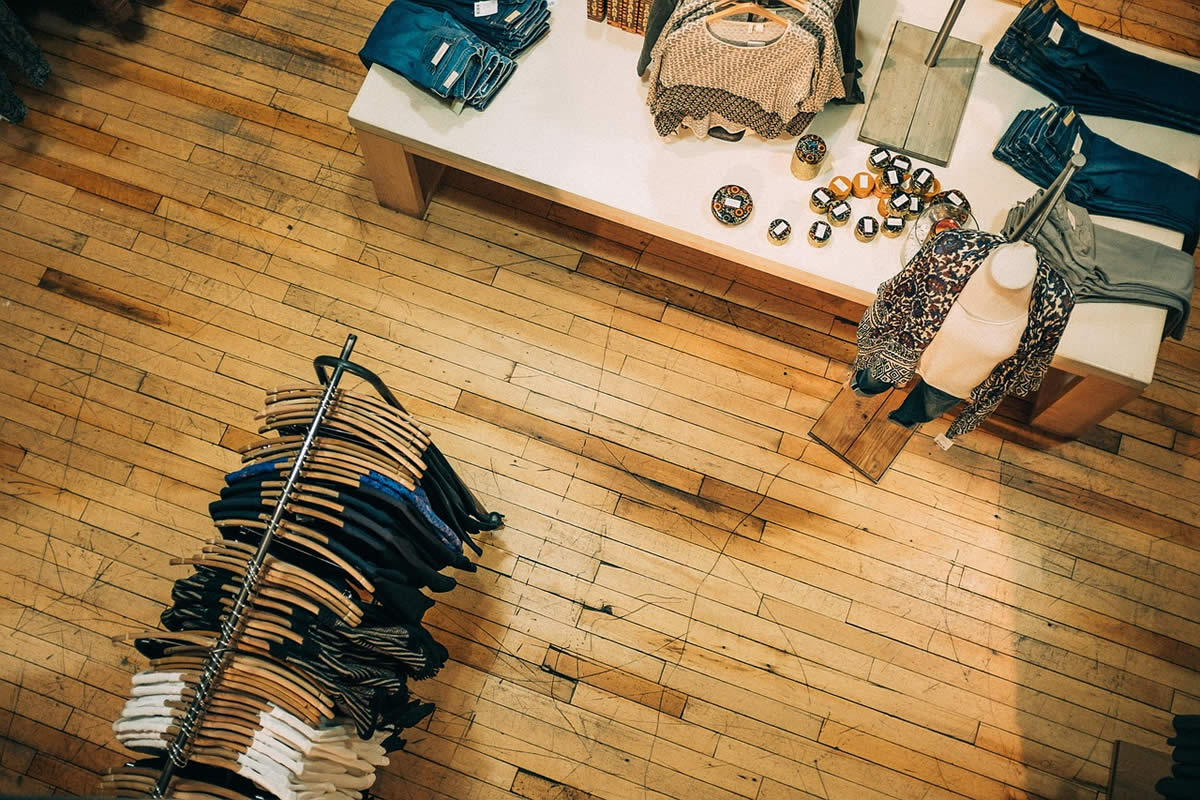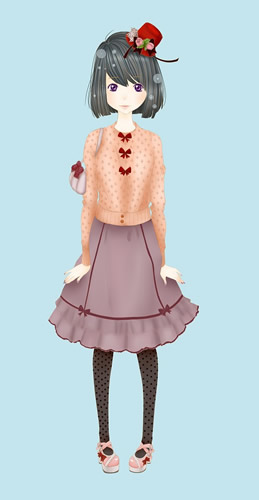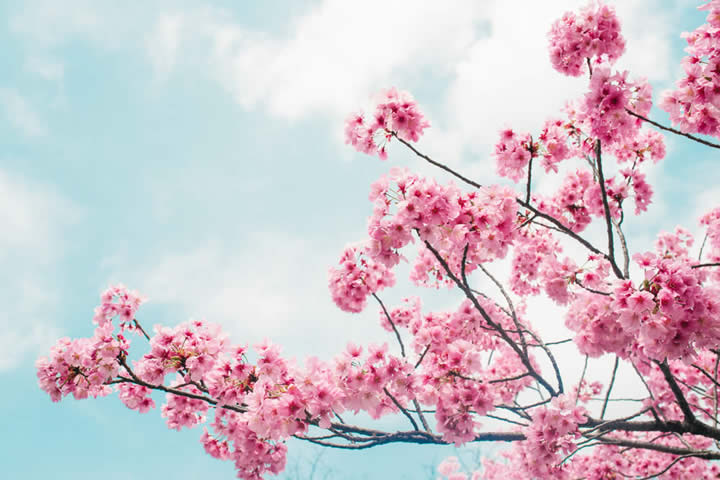Expressions are one of the many ways that people can show how they feel about a certain subject. Some people display their feelings through facial expressions, like smiling or frowning, while others demonstrate their emotions by actions such as crying when they are feeling sad or hitting something when they are angry. Now there are also other types of expressions such as showing one’s individuality. It is a little bit more complex than just emotions wherein people express or act based on feelings; presenting one’s individuality is based on conscious decisions that affect one’s image. One way of doing this is by having his or her own style. While generally, every individual has his or her own style, there is still common ground depending on one’s likes and dislikes and one’s location. Japan, in particular, has its own distinct style that it is quite known for around the globe.

Hairstyles for Japanese Men and Women: Then and Now
When talking about style, most people would automatically think that it is about clothes. However, one should also be aware that style is not just all about clothes; it is about the whole image, and that includes the hair. Japanese people have been conscious about this since the beginning of time. The history of Japan is filled with symbols and culture and so do the hairstyles that the Japanese people sported way back when. For the men, there was one specific hairstyle that was quite popular during the Edo Period. From the year 1603 to 1868, most men’s hairstyle was based on the chonmage. Also known as the samurai hairstyle, the chonmage was great during that time as the man, supposedly a samurai warrior can wear his helmet on his head during battle. This hairstyle, later on, became a status symbol in the country wherein only men of high rank and status were allowed to sport the chonmage. Up to this day, sumo wrestlers still have their haircuts done to show this type of hairstyle. Although on a regular basis, most men these days just prefer clean cuts.

As for the women, the most popular traditional hairstyle back in the day was the shimada. Also well-known during the Edo period, the shimada was usually sported by Japanese girls in their late teens. There are basically four major types of the shimada, namely, the taka shimada, the tsubushi shimada, the uiwata, and the momoware. These days, only the geisha wear the shimada hairstyle. Another traditional hairstyle in Japanese history is the hime cut or the hime katto. Also known as the princess cut, the hime cut was made popular during the Heian period wherein women in the imperial court sported this hairstyle. What was great about this hairstyle was that women were able to show off their long, luscious locks. On the other hand, nearing the end of the Edo period, the hairstyle that came into fashion was the yoko-hyogo. Only a woman of high rank and courtesans wore this hairstyle back then. What was nice about this hairstyle was that various ornaments accompanied the yoko-hyogo style. Today, there are many styles and even color that Japanese women wear on their hair to express themselves through their crowning glory.
From Lolita to Visual Kei: The Unique and Colorful Harajuku Style of Japan
Today, there are various styles that Japanese men and women sport everyday. Specifically, the youth of today are more into the street fashion wherein they are totally free to express themselves. There are even urban fashion districts that are known for their liberated sense of style in clothing. Among the numerous urban fashion districts is Harajuku. There are basically seven main types of style in Harajuku fashion, namely, Lolita, gyaru, ganguro, kogal, bōsōzoku, decora, and visual kei.
Probably the most popular of the bunch is the Lolita fashion style. Lolita fashion is not only sported by Japanese women but is also gaining popularity worldwide. There is a certain distinct look that the Lolita fashion has that women love. One cannot fault Lolitas for taking a photo in the bathroom usually with white tiles because dressing up within the Lolita fashion can take a lot of work. Within Lolita fashion, there are also distinct styles that cater to different types of women. First is the Gothic Lolita. Gothic Lolita, as the name implies, relies heavily on the gothic style of clothing. Women who are into the Eastern and Victorian Goth style might appreciate this look. Most icons or accessories that come with Gothic Lolita are dark colors, crosses, bats, and spiders. Some dresses also have iron gates and architectural design printed on them. Ruffles and laces in the Victorian style also come with Gothic Lolita. Most women who are into Gothic Lolita wear knee-length socks, black boots, brooches, and sometimes even a parasol.
The second most popular style in the Lolita fashion is the Sweet Lolita. As the name implies, this style depicts women as childlike and sweet. Unlike Gothic Lolita wherein it is all about dark colors, Sweet Lolita comes with pastel colors that depict innocence and sweetness. Highly influenced by Alice in Wonderland and Victorian children’s clothing, the Sweet Lolita style is composed of baby animals and fairytale themes. Most women who are into Sweet Lolita style also sport clothing with Hello Kitty and Rilakkuma design on them. Accessories for the Sweet Lolita style include but are definitely not limited to huge head bows, cute pastel purses, white or pastel pink parasols, and stuffed toys that they carry around.

Another famous style of Lolita fashion is the Punk Lolita. Basically, it is the fusion of Punk and Lolita. There is really no coordination with Punk Lolita most of the time and the idea of how Punk Lolita would be expressed in clothing can be seen as crazy. On the other hand, what is great about this style is that one can just throw whatever piece of clothing they want so long as there is still that “Lolita silhouette.” Considered as an experimental style, there is definitely some angst when sporting the Punk Lolita.
On the other hand, if one would like to stick to just Lolita fashion, then there is the Classic Lolita. Basically, it is of traditional Victorian clothing and can be seen as formal or business-like. The main colors for Classic Lolita are blue, green, and red. So for those who want to try the Lolita fashion and are just beginners in this style, then it would probably be best to start off with Classic Lolita. What is great about this style is it remains simple and still elegant. After all, the main idea of Lolita fashion is looking feminine and Victorian.
However, fret not for those who still want to try Lolita fashion but are not feminine, because another popular style within the Lolita fashion is the Kodona. Also known as boy style or ouji, the kodona caters to those who are more masculine when it comes to their style. Highly influenced by Victorian boys’ clothing, most Japanese who are into the Kodona style sport “prince pants” or short capri-style pants. The Lolita fashion is still present in the Kodona as there are still details reminiscent of the Lolita fashion such as lade-edged cuffs.
If one is looking for Harajuku fashion that is based on the style from the 1970s, then look no further than gyaru. Highly influenced by Western fashion, gyaru is a type of Harajuku street fashion that concentrates on being girly-glam. The style itself centers on man-made beauty, hence, women who sport this style wear wigs, fake lashes, and even fake nails. A subcategory of gyaru is ganguro, which is another style in Harajuku street fashion. Unlike gyaru, ganguro is based on the style from the early 1990s and started gaining popularity among the youth the early 2000s. The three major compositions of the ganguro style are the bright, colorful clothing, short skirts, and sarongs that are tie-dyed. One can spot a girl into ganguro style when she is sporting bleached hair, deep tan, black and white eyeliner, platform shoes, and fake eyelashes to name a few.
On the other hand, the Lolita fashion is not the only style within the Harajuku street fashion that is focused on looking childlike. Another style of a similar sort is the kogal or kogyaru. Girls who are into kogal basically wear high school uniforms as their form of style. The only distinctions between this style and the regular high school uniforms in Japan are the shorter skirts for kogal, loose socks, and sometimes, dyed hair. The popularity of this style peaked in the 1990s but somehow declined afterward. Another style that was popular in the 1990s was the bōsōzoku style. This style basically only consists of a jumpsuit that is usually worn by either manual laborers or a tokko-fuku. These days, this type of style can only be seen both in anime and manga and in cosplay events.
Two more popular styles within the Harajuku fashion trend are the decora and visual kei. Both styles have their own distinctions that set them apart from the other styles. They are certainly worth checking out especially for people who are just starting on the trend of Harajuku street fashion.
Dressing Simple: Zen Style for Men and Mori Style for Women
While the Harajuku fashion is all about bright and bold colors, there are also Japanese styles that are great for people who like simplicity. A guy may like to dress simply so as to avoid attention and not come off as loud in terms of clothing. Hence, for those men who are minimalist, look no further than the zen style. This new line is currently gaining popularity because of its mute and minimalistic features. Highly influenced by the Zen Buddhist priests back in the day, the zen style offers clothing for both casual wear and formal wear. Earth tones are the main colors for this type of style.
On the other hand, girls can opt for the mori style, which is gaining popularity in the recent years. As mori literally translates to “forest,” earth tones like green, cream, and brown are also incorporated in the palette of this style. Women who are into the mori style are called mori girls. The mori style has a vintage feel and is great for women who like loose dresses. Basically, the mori style consists of mid-length to long skirts, smock blouses, A-line dresses, ponchos, boleros, cardigans, sweaters that are large in size, and turtlenecks. Fabrics to be used to achieve the mori girl look are lace, linen, crochet, and knit. The mori style also incorporates depth and texture, hence, layering is essential to achieve the mori girl look. If the weather is a bit cold, just layer on some matching shawls and boleros to combat the cold. As for the footwear, boots and closed toe shoes are what most mori girls wear to complete the look. Accessories that come with the mori style are small and delicate while the purse can be a bit quirky. To complete that mori girl look, definitely wear a floral headpiece.
Style for All Seasons: Spring, Summer, Fall, Winter

Because the seasons constantly change in Japan, the same can also be said about the people’s style. After all, the most important part of sporting a style is not just being able to express one’s individuality, but also being comfortable in one’s own clothes. For the spring season, the most awaited event in the country is the blooming of the sakura or cherry blossoms. Hence, it is not surprising to know that the hue that the Japanese sport in their clothing during this season is the color of the sakura, which is light pink. While the weather during this season can still be a bit cold, it has already started warming up a bit, hence, the best clothing to wear are light pieces and the key is layering them.
When the sun comes up during the summer season, it is time to shed off those layers of clothing and sport colorful outfits, as the summer season in Japan is the festival season. Bright and bold colors are definitely popular during this season but do not forget to bring an umbrella as the sun can burn your skin, especially during the hottest summer peak in the country, August. And when the leaves start to fall, then it is time for the autumn season. It would no longer be as hot and might even feel chilly for some. A great tip would be to bring a hip-length, medium coat when going out during this season. Enjoying the wonderful, colorful foliage during this season and sporting autumn colors like brown, red, and yellow is definitely in order during this season.
When winter comes, then it is time to layer on those clothes, as it will be really cold and freezing. As much as one would like to just curl up in bed or read a book in one’s own space while it is snowing outside, one would still need to go out sometime. Layer on some heavy clothes and ensure that one is warm inside the house of hotel. Gloves, hand warmers, mittens, and thermal leggings should be on-hand during this season to combat the cold while still being in style.
